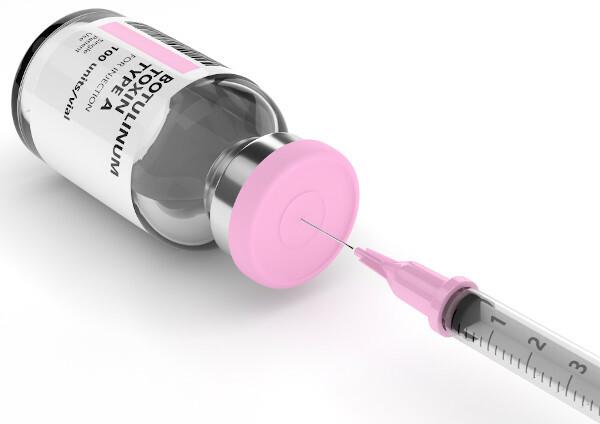Clostridium botulinumis a gram-positive bacillus that has the ability to form spores and stands out for producing a powerful neurotoxin. The toxin produced by bacterium it is responsible for triggering a disease called botulism, which causes muscle paralysis and can be fatal.
Botulism can be classified into four forms: foodborne, intestinal, wound, and infant botulism. Botulinum toxin, despite being related to a serious illness, has therapeutic and even aesthetic uses.
Read too: Diseases caused by bacteria
Topics of this article
- 1 - Summary on Clostridium botulinum
- 2 - What is Clostridium botulinum?
- 3 - Where does Clostridium botulinum live?
-
4 - Clostridium botulinum and botulism
- → How does Clostridium botulinum contamination occur?
- → Treatment of botulism
- 5 - Uses of botulinum toxin
Summary about Clostridium botulinum
Clostridium botulinum It is a gram-positive, spore-forming, rod-shaped bacterium.
Clostridium botulinum produces a powerful toxin that can be lethal.
O botulism can be fatal and is treated with the use of antibotulinum serum and antibiotics.
Botulism causes death, mainly from respiratory failure.
Botulinum toxin has therapeutic and aesthetic uses.
What is it Clostridium botulinum?
Clostridium botulinum is the scientific name of onebacterium known primarily for producing a toxin responsible for causing botulism. It is a gram-positive bacillus that produces spores and develops in half anaerobic, that is, without the presence of oxygen.
the bacteria Clostridium botulinum produces an extremely powerful neurotoxin. To get an idea of the lethality of this toxin, just one gram of botulinum toxin is capable of killing 30 million mice. Currently, eight different groups of botulinum toxins are recognized, which are designated by the letters A, B, C1, C2, D, E, F and G.
Do not stop now... There's more after the publicity ;)
Where does the Clostridium botulinum?
The bacteria is often found at the ground, in vegetables, such as greens and fruits, in aquatic sediments and in human feces. The spores produced by Clostridium botulinum are quite resistant, standing out for being able to survive for more than 30 years in a liquid medium. In addition, they tolerate temperatures of 100°C for hours.
See too: Food poisoning — causes, symptoms and how to prevent this health problem
Clostridium botulinum and botulism
Botulism is a illness caused by the toxin produced by the bacteria Clostridium botulinum. It is about a illness neuroparalytic serious which can be lethal if proper treatment is not carried out properly and quickly.
Botulism is not a contagious disease and can be classified into four forms:
foodborne botulism;
intestinal botulism;
wound botulism;
infant botulism.
→ How does contamination occur? Clostridium botulinum?
In the case of foodborne botulism, the disease is acquired when the individual ingests the toxin of the bacteria incontaminated foodand that were improperly produced or preserved. Among the foods most related to the problem, according to the Ministry of Health, we have canned vegetables; handcrafted cooked, cured and smoked meat products; smoked, salted and fermented fish; cheeses and cheese paste; and occasionally industrial canned foods.
With regard to the intestinal form, transmission occurs when the patient ingests the spores present in food and the agent settles and multiplies in the individual's intestine. In this place, the botulinum toxin will be produced and absorbed.
In wound botulism, one of the rarest forms of botulism, transmission occurs when bacteria contaminate wounds, as ulcers Chronic lesions with necrotic tissue, fissures and deep wounds in poorly vascularized areas.
There is also infant botulism, which is a form of intestinal occurrence and whose main cause is ingestion of honey bee in the first weeks of development of child.
→ botulism treatment
Botulism, as noted earlier, is a serious disease, so it is important to highlight that The botulism notification responsible health authorities it is compulsory, that is, it must be done within 24 hours, so that they act quickly to prevent the occurrence of this disease in other people.
The disease causes the death of the individual due to the fact that the botulinum toxin affects the individual's motor control. Death usually occurs as a result of respiratory failure caused by paralysis of the muscles breathing. The treatment of botulism must be carried out in the ICU and is based on the use of antibotulinum serum, antibiotics and patient support measures.
Know more: O is Botox®?
Uses of Botulinum Toxin

the bacteria Clostridium botulinum produces a toxin that is known to cause the disease called botulism. In botulism, the toxin causes severe paralysis, however, if administered in small amounts,can be used for aesthetic purposes and also therapeutic.
In the case of aesthetic treatments, the use of botulinum toxin aims mainly at soften expression lines and deep wrinkles, as well as repositioning the eyebrows. In this case, according to the Brazilian Society of Dermatology, treatment involves injecting very small amounts into the underlying muscles to immobilize them.
The toxin can also be used in the excessive sweating treatment, bruxism, strabismus and blepharospasm. It is important to highlight that, according to the Ministry of Health, although rare, there are cases of accidental botulism associated with the aesthetic or therapeutic use of botulinum toxin.
By Vanessa Sardinha dos Santos
Biology teacher
Learn more about bacteria by clicking here. Check the general characteristics, reproduction and classification of these prokaryotic beings.
Do you know what Botox® is and what are the possible uses of this product? Click here and learn all about this neurotoxin that is currently used a lot.
The symptoms of botulism are related to toxins from the bacterium Clostridium botulinum.
What it is, diagnosis and how to treat bruxism.
Learn more about food contamination and how it can be prevented.
Learn more about diseases caused by bacteria, the symptoms they trigger, treatment and prevention.
Do you know what are the causes and symptoms of food poisoning? Click here and learn more about this problem that affects many people every year.



